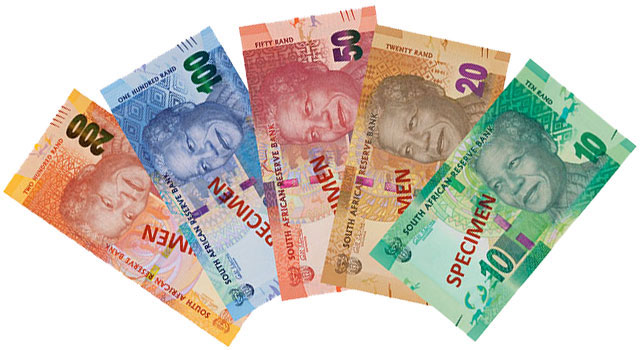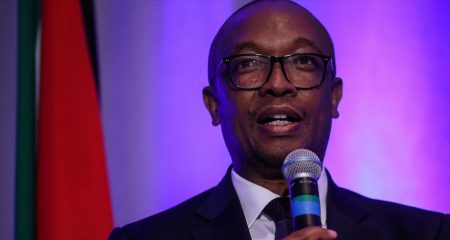
Move over Mexico. With the US election campaign over, South Africa’s rand has replaced the peso as the currency next in line for the biggest politically driven price swings.
The peso, considered a barometer for investors’ views on Donald Trump’s chances, has been roiled as the presidential candidate’s fortunes ebbed and flowed. Now it’s the rand’s turn, with a measure of expected volatility over the next three months rising above that of the Mexican currency as the focus shifts to President Jacob Zuma and his battle with finance minister Pravin Gordhan for control of the country’s purse strings.
The rand has closely tracked Zuma’s fortunes over the past three months, advancing when his position weakened and selling off when Gordhan seemed threatened. The volatility is significant because it’s making the rand a tough trade and rating companies preparing to review the country’s creditworthiness have cited political uncertainty as a major risk.
“The rand is a real measure of the political risk premium,” said Guillaume Tresca, the Paris-based senior emerging market strategist at Credit Agricole’s corporate and investment banking unit. “You buy the rand or you sell the rand for nine, 10 days or one week, because you know it can flip very rapidly, just on the politics.”
Politics is increasingly becoming a driver of currency moves around the world now that central banks are starting to pull back from monetary stimulus. Turkey’s lira slumped to a record last week as police rounded up opposition leaders, while the British pound has weakened more than any other major currency this year as the nation contemplates an exit from the European Union.
When South Africa’s Gordhan was charged with fraud on 11 October, the rand plunged 4%, only to rally 2,8% when the charges were withdrawn three weeks later. The currency then jumped 1,1% when Zuma dropped a court bid to block the release of a graft ombudsman’s report that implicates him in unethical conduct, sparking widespread calls for him to step down.
Three-month implied volatility for the rand versus the dollar, based on the price of options contracts to buy or sell the currency, rose to 19,3% on Monday, more than the peso’s 17,5% and the highest among emerging market peers, suggesting traders see no end to price fluctuations soon.
“Politics is key, particularly with South Africa on watch and the credit rating agencies still deciding on whether to downgrade South Africa to junk status,” said Lee Hardman, a currency strategist at The Bank of Tokyo-Mitsubishi in London. “Certainly, more recently political developments in South Africa have created more volatility for the currency.”
Zuma has lurched from crisis to crisis. S&P Global Ratings and Fitch Ratings, which both rate the country’s debt at the lowest investment level, are reviewing their assessments in December. Judging by the reaction of the rand, investors believe that Zuma’s exit would strengthen Gordhan’s hand in his efforts to bring spending and debt under control and avert a debt downgrade to junk, according to Peter Attard Montalto, Africa economist at Nomura International.
“Markets are likely to rally strongly on anything that looks” like Zuma’s exit is closer, he said. “In our view, this overplays the role of Jacob Zuma in stopping reform in South Africa and overestimates the change that will come. Nevertheless, South Africa assets can rally strongly on cabinet resignations, protests and calls for resignation and of course the actual event itself.”
Zuma is unlikely to give up without a fight, further clouding the outlook for the rand, said Tresca at Credit Agricole. The currency will probably weaken about 8% by year-end to R14,35/US$, from R13,37 on Monday, according to the median forecast of 31 economists in a Bloomberg survey. Predictions ranged from R13 to R18/dollar.
“My concern is that it’s not the end of the story at all, it’s just the beginning,” Tresca said. “I don’t think that Zuma will do nothing. He will find another way to strike back. The rand will remain very hard to trade.” — (c) 2016 Bloomberg LP




